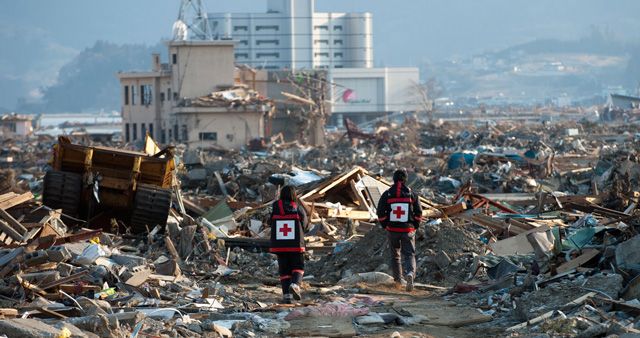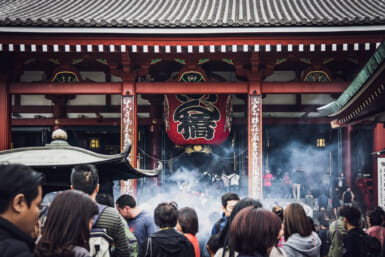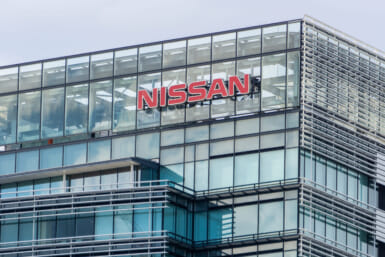As the one-year anniversary of the earthquake and tsunami that devastated northern Japan approaches, the nation is looking back and thinking ahead.
How has Tohoku recovered since the disaster, and what can we expect in the year to come?
Situation in Tohoku:
Up north, much of the tsunami debris had been cleared away and many roads have been rebuilt. However, tens of thousands of survivors who lost their homes in the disaster are still living in temporary housing.
Although basic infrastructure has been restored in Tohoku, communities are still struggling.
Many who lost their jobs when the disaster destroyed businesses, agriculture and fisheries industries, have not yet found new employment.
Communities are surviving on aid and government assistance and struggling to rebuild both economically and socially.
The Fukushima Daiichi nuclear reactor achieved cold shutdown in December of last year. Now that there is no more new radiation spewing into the atmosphere, efforts are focused on cleaning up the radioactive contamination that occurred over the last ten months.
Power shortages:
Power is still in short supply in Japan. Most of Japan’s nuclear power plants were shut down for safety checks or maintenance after the 3/11 disaster.
As of this week, only two of Japan’s 54 nuclear reactors were online.
Before 3/11, Japan relied on nuclear power for 30 percent of its electricity needs, so the post-disaster reduction in nuclear power is straining Japan’s energy grid.
However, trade minister Yukio Edano promised last month that Japan will be able to get through the summer without the rolling blackouts or mandatory power cuts it imposed last year.
Although there will be no scheduled or mandatory power cuts, expect to see ‘setsuden’ power conservation efforts continue through 2012: dim lights, weak air conditioning and posters everywhere reminding you to save power.
Food safety:
When the Fukushima Daiichi reactors melted down, they released radioactive iodine and cesium isotopes into the atmosphere.
Although iodine isotopes with their eight-day half-lives are no longer a concern, radioactive cesium still poses a food contamination risk.
The Japanese government is testing food produced in affected areas for radioactive contamination, and the Health Ministry has just set new, extremely strict limits on cesium in food, especially baby food. The new restrictions take effect in April.
However, since food safety inspectors can’t test every vegetable or grain of rice coming out of Fukushima, there is still a very small risk that food from the region may contain radioactive cesium.
Volunteering in Tohoku:
Even though the rubble is cleared and basic infrastructure restored in Tohoku, volunteers are always welcome.
For those foreigners who are not specialized in construction there are still ways to contribute.
Tohoku disaster relief agencies are looking for volunteers who can offer social support to disaster survivors.
Elderly residents in temporary housing need people to talk to, displaced children need tutoring help to keep up with their schoolwork, and many survivors just need to see a friendly face as they rebuild their lives.
Most relief efforts are now being coordinated by prefectural disaster recovery centers, so if you are interested in helping out, contact prefectural offices.
Some agencies such as ‘Team Nadia’ are looking for volunteers to help clean damaged houses over weekends, a popular activity amongst busy Tokyoites and especially recommended if you have not been up there and can spare a weekend.
Finally, if you are too busy to physically be in Tohoku there is always the convenient option of donating directly to Tohoku residents through the Japan Red Cross and organizations like Team Nadia.
(See: www.jrc.or.jp/english/ • www.team-nadia.org)
Exodus and return of foreigners:
Immediately after the earthquake, tsunami and nuclear meltdown, there was an exodus of businesses, embassies and residents from Tokyo.
Uncertainty about radiation, food shortages and rolling blackouts drove many out of the Kanto region or out of Japan altogether.
The exact number of foreigners who left Japan because of safety concerns after the quake is hard to determine.
Chiba prefecture just reported its first population decline this month, citing an exodus of about 5,000 foreigners post-disaster as a major cause.
The disaster hit Japan’s tourism industry hard. The number of foreign tourists coming to Japan last year dropped by 28 percent.
Things are off to a better start this year with a boom in Chinese tourists coming over Lunar New Year.
When is the next one coming?
Earthquake scientists recently announced their prediction of a 70 percent chance that a major quake will strike Tokyo in the next four years.
Strangely little panic followed the announcement. So is the next big one something to worry about?
Japan is not exactly a seismically stable country. People here expect the earth to shake—there is, on average, one earthquake a day somewhere in the country.
Have emergency supplies in place and make a disaster plan with your families, but remember this Japanese proverb: “Natural disasters happen as soon as we forget about natural disasters”. [天災は忘れた頃にやって来る].
If you needed one more reason to keep Tohoku in your thoughts this month, there it is.
Photograph courtesy of JRCS
Text by Annamarie Sasagawa









